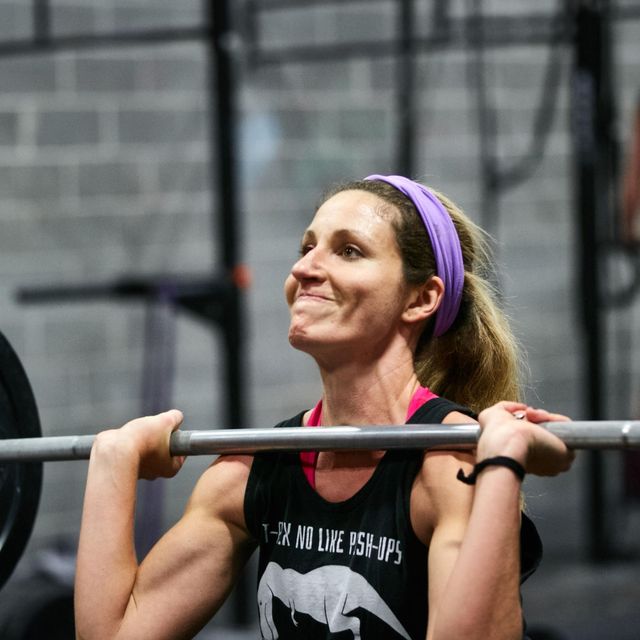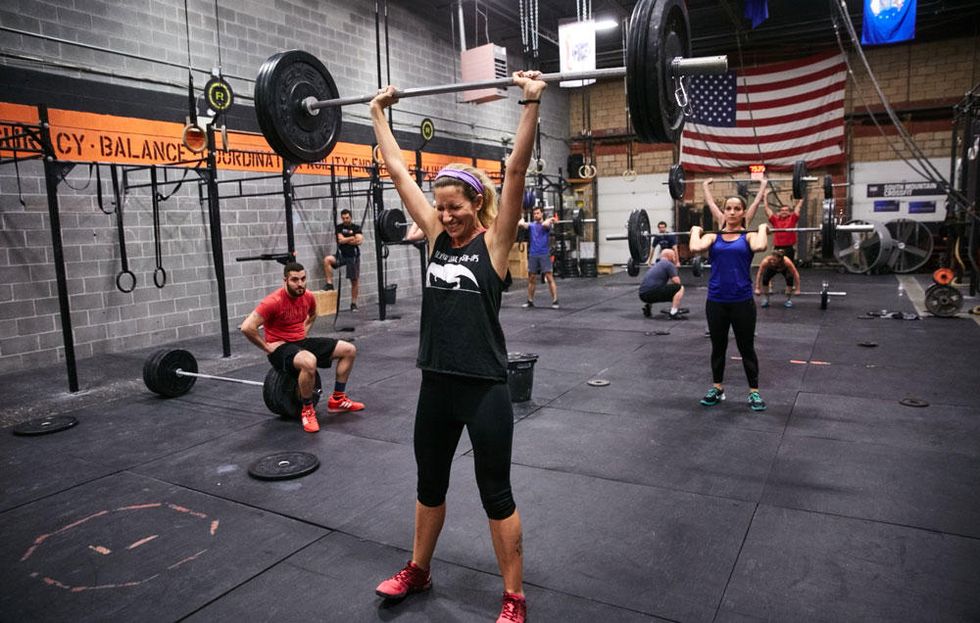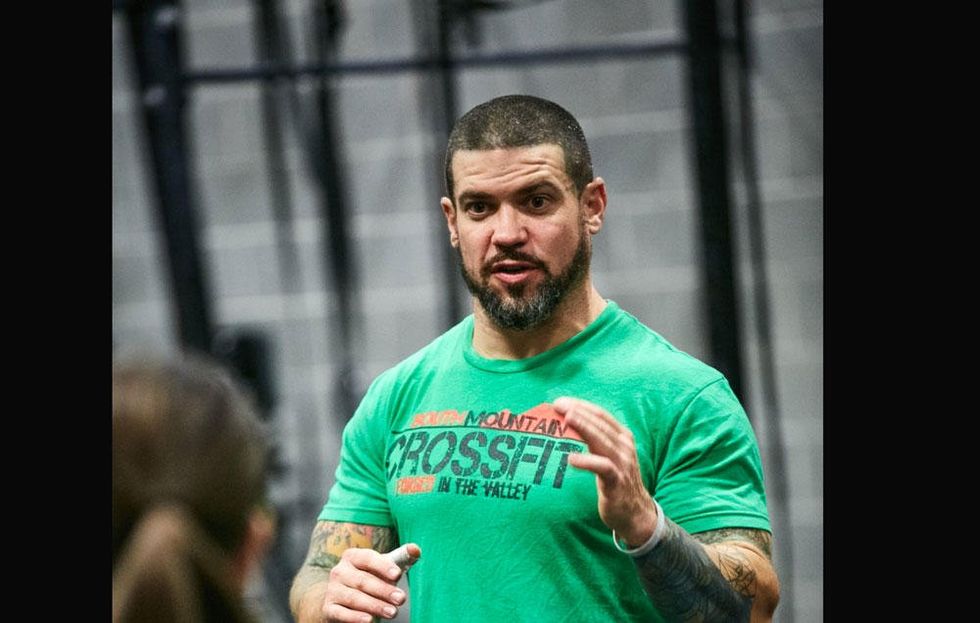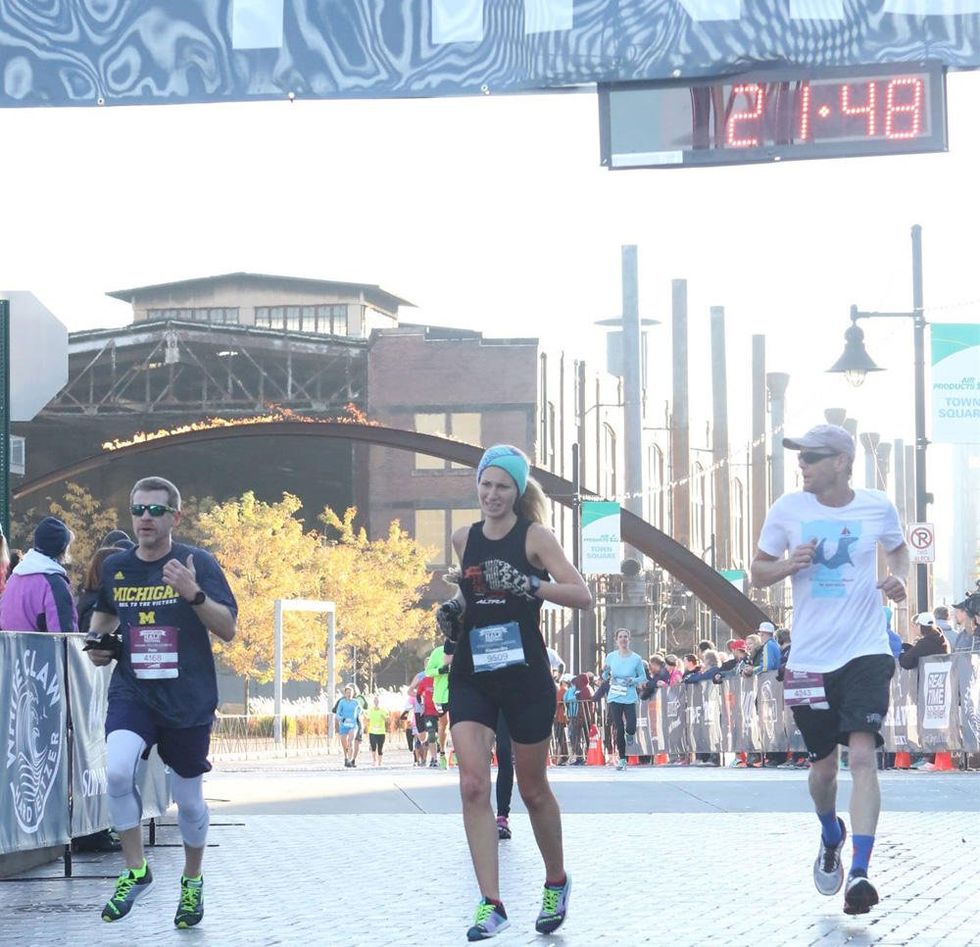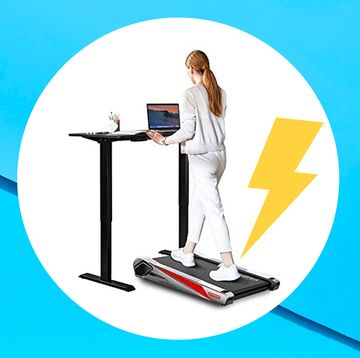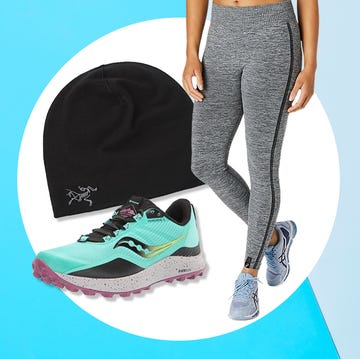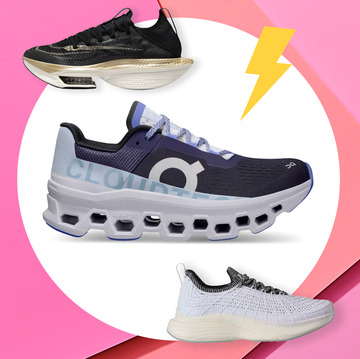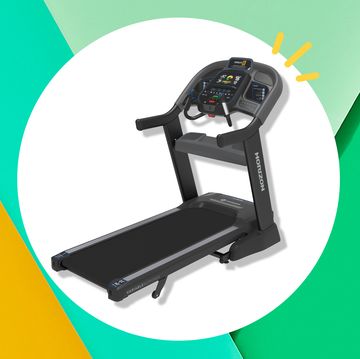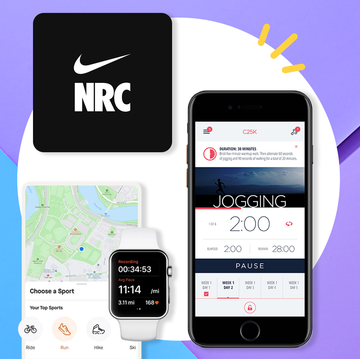This article was written by Ali Nolan and provided by our partners at Runner's World.
“Faster!” I yelled at myself with spit flying from my mouth. All I could see were my forearms locked in place, gripping the polls of the sled I was pushing.
“Drive your knees!” called a deep voice, my coach, I presumed. I glanced sideways and saw a hand pointed to the 100-yard mark where I would turn the sled around, sprint to a mat, complete 20 situps with a 14-pound medicine ball overhead, then return to push the sled back. My core ached, my quads screamed. I was about to throw up.
Why, I wondered, am I doing this?
Well, I was on a mission to see if CrossFit could help me achieve a 5K PR.
I’d been chasing this for about a year, trying to best a time I ran while I was marathon training—22:50 at the Runner’s World Half & Festival in 2015. I planned to make that same course my goal race, but my training had grown stale. Intervals bored me now, and I regularly skipped my long runs. I needed a change.
But CrossFit? Among my running friends, CrossFit is whispered like a dirty word—a trend, all hype, not something to be tried. It was, we believed, an injury waiting to happen, and a surefire way to kill running careers.
But I’d always been secretly curious. I figured the plyometric movements and strength training involved would enhance my fast-twitch muscles, allowing me to break out of my “coasting” pace and into a new realm of speed.
So I did the unthinkable: I emailed Kurt Miller, a certified CF-L1 coach at South Mountain CrossFit, (a box—or gym in CrossFit parlance—he co-owns with his wife Kacie, a certified CF-L1 and wellness coach) in Allentown, Pennsylvania.
Coach Kurt, a former 400-meter runner, responded immediately and expressed complete faith that I would PR, certain I could get into great shape in just 30 days.
CrossFit will humble you, but you will surprise yourself.
In some of our first exchanges, Coach Kurt told me his plan: “You’re a crazy runner, so we don’t really need to worry about that part of the equation,” he said, noting that my aerobic capacity and athletic endurance was already above average. “We’re going to build up your overall functional strength at a high level of intensity, that is essentially the definition of CrossFit.”
There’s no denying it: I was intimidated. At the box, I peered through the window into the gym area and saw some really big (muscular) dudes and women grunting and dropping weights from overhead to the floor.
Despite being out of my comfort zone, I felt welcomed and supported from the get-go. Coach Kurt had an endearing intensity as he guided me through various exercises; squats and box jumps and kettlebell swings.
Then I learned how to pick up a barbell for the first time. We went through deadlifts, cycling through five reps and adding more weight several times until I was up to 105 pounds. My previous weight training had always been performed with a set of five-pound dumbbells. I felt like a rock star. (Want to improve your running performance in as little amount of time as possible? Check out the new 10-Minute Cross-Training for Runners workout DVD from Runner’s World to help you get stronger overall.)
After my workout, I pointed to some of the women next to me who were practicing various Olympic lifts with hilarious names. There was the clean and jerk, the thruster, the snatch, and my soon-to-be arch nemesis, the overhead squat. The technique for these lifts looked impossibly difficult, requiring two things I was sure I lacked: coordination and super strength.
“When do I learn that, like next month?”
“No, like tomorrow,” Coach Kurt said.
I appreciated this rapid progression in mindset. In my running life, I could be overly cautious, sticking to slower paces when my watch dictated instead of going by feel. Here, I was expected to learn quickly and push myself to the max. And the best part was, I learned I could do just that.
It is totally possible to balance CrossFit with running.
Before I signed on to this experiment, I rarely strength-trained because it didn’t fit neatly into my training schedule. I told Coach Kurt that my goal was to maintain 20 to 25 miles per week, and he told me that was too much—that volume would risk burnout.
He suggested I drop down to five miles through short running workouts twice per week. I laughed at him.
He showed me an outline of what he had in mind with three to four days in the box and two days of exercises focusing on building anaerobic strength through repeats on the track, air assault bike, or rowing machine. We compromised at 10 to15 running miles per week.
It was strange to cut down on the miles, and I won’t lie, I cheated a little bit, running long, slow 10-milers on Saturdays, hoping I wouldn’t feel burned out on Monday.
This is an abbreviated look at the schedule I followed:
| Ali’s CrossFit Schedule | ||||||
|---|---|---|---|---|---|---|
| Monday | Tuesday | Wednesday | Thursday | Friday | Saturday | Sunday |
| Sleds/sprints | 3m easy | Power cleans, squats, row | Speedwork | Overhead squats | 8m easy | Rest |
| Olympic lift combo | Tempo run | Back squat, burpees | Speedwork | Deadlifts | 10m easy | Rest |
| Rows, straight press | Tempo | Bench press, sleds | Speedwork | Snatches | 10m easy | Rest |
| Push press, kettlebell snatch | 8m easy | Deadlifts, thrusters | Stone lifts | Speedwork | 6m easy | Rest |
| 3m easy | Row | 3m with strides | Rest | easy run | RACE | Rest |
I expected to feel antsy with such low volume of running. But instead, I felt great. I had more energy than I had in months. Perhaps that’s because I looked forward to the running days—I knew I could push through miles easily.
CrossFit hurts…in a good way.
Yes, the first week left me sore as hell, and I fully expected that. After failing to lift 45-pounds in an overhead squat (it’s not as easy as it sounds) on that first Friday, I realized my ankles had grown stiff from years of forward plodding and my core was not as strong as I thought it was.
The Saturday after that terrible fail, I met friends for a 10-mile run. My hips ached. My anterior deltoids burned. As I struggled to keep up, I cursed Coach Kurt. I wondered what on earth would happen in the next month. Would all my hard-earned running fitness disintegrate into a pool of pain?
But the next week, the form of the Olympic lifts started to make sense, and I was able to lift more weight. I could get through three squats with more than 103-pounds on my back. And I could take 65-pounds and clean it up and jerk it over my head. I was killing my rowing machine workouts and gaining more endurance on the air assault bike. Each day brought a new, small success.
When I stepped onto the track to do some intervals, I figured my aching hamstrings would prevent me from hitting my paces. But instead, I found that with a proper warmup, the prescribed times were almost…well…easy.
RELATED: The CrossFit Workout Runners Should Actually Try
By the third week, my nerves before classes went away. I started asking questions because I had new goals. Sure my PR was important, but now I wondered how soon I would be able to do a pullup. I started doing wall walk-ups so I could build enough strength to do a handstand.
When I looked in the mirror, I saw minor, but impressive changes. I looked less like Olive Oil and more like Wonder Woman. My quads were solid, my shoulders and arms were definitely growing. I was thrilled—I knew these new muscles would help me attack hills. (And yes, I bought new muscle tanks.)
In the last week before the race, I knew I had to cut way back on the lifting. Like most taper weeks, I felt miserable. But this time, there was another feeling of horror as my arms and legs felt like spaghetti.
I filled the hours I would’ve spent at the box with yoga, and as I went through pigeon pose, I thought about the long-legged strides that might improve my time. But I also thought about the needed mobility to reach my overhead squat one-rep max. What strange language was this internal monologue speaking? What had happened to me?
Your attitude is half the battle.
Coach Kurt called me the day before my race. Before this endeavor, I had planned to run an even pace for the whole 3.1 miles.
He mentioned negative splits or bust. I agreed and told him I was going to run as fast as I could the whole time and charge the hills because my legs felt strong. My game face was on.
This was certainly a new attitude. I’d always had the discipline to train for and endure a race. At CrossFit, in every Workout of the Day (WOD) I did, I was not merely enduring but attacking the work.
Every night I pushed a little past where I thought my body could go—from finishing a post-workout 400-meter, 35-pound kettlebell farmer’s carry in the dark to pedaling my quads out during bike sprints.
Learning to embrace the pain was a different sort of push than I’d experienced while running—and I kind of loved it. I knew I could tap into that if I needed to especially at the two-mile mark where a steep incline slowed me to a crawl last year, so my brain felt ready to run faster than I ever had before.
Was it CrossFit?
Quick race recap: I ran the first mile a full 20 seconds faster than I intended to, but I didn’t feel tired. I didn’t slow down to hit my pace, and I didn’t panic. Instead I pumped my legs, dropped my shoulders, stopped looking at my watch, and ran the second mile as though it were my last.
In the third mile, I was still too scared to look down at my watch. My legs felt sturdy and strong—but my chest was tight. I tried to clear my throat and calm my breathing. I could feel myself slowing. Then I saw a friend on the course who told me to keep going and, just as I would listen to my CrossFit comrades if they told me to “move it” or “pick it up,” I listened. I was in pain, but that extra bit of motivation propelled me forward.
Approaching the finish, I saw the red numbers on the digital race clock. It read 21 minutes and some change.
I was certain what I saw was a mistake.
Instantly, I felt my stomach start to rise. I still had a bit to go to the finish line and, to put it bluntly, I was about to hurl. But my legs followed my heart to a 21:48 finish—more than a minute better than my previous 5K PR.
After the race, Coach Kacie congratulated me. I asked her if she thought it was mental, or if I had really strengthened my muscle fibers?
“Sure, it’s mental and those muscle fibers are important,” she said. “But it’s more than that. The WODS are designed to challenge your VO2 max and your lactate threshold, which means that when you race you’ve increased the amount of time you perform at your peak.”
I knew she was right. The third mile felt like evidence.
Here’s the weirdest part: I’ve continued CrossFit, hungry to accomplish more. I never imagined I would be “one of those CrossFit people.” But I joined the box, bought the shoes, and—recently—got myself into a handstand.
Each day I’m there, I remind myself to be patient, do the best I can, embrace the process, and celebrate small gains. I visualize myself going even faster, getting stronger, setting new PRs.
And the best part is I have so much work to do.

